Info
Subfamily: Panicoideae
Genus etymology: Paspalum = "millet" [Greek] some species are used as cereals
Species etymology: arundinaceum = "reed like" [Latin] refering to the culms resembling a reed
Photosynthetic type: C4 (warm season)
Nativity: naturalized - accidental
First recorded in Hawaiʻi: 2005
Map
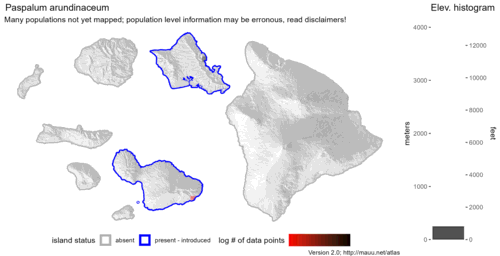
Inflorescence
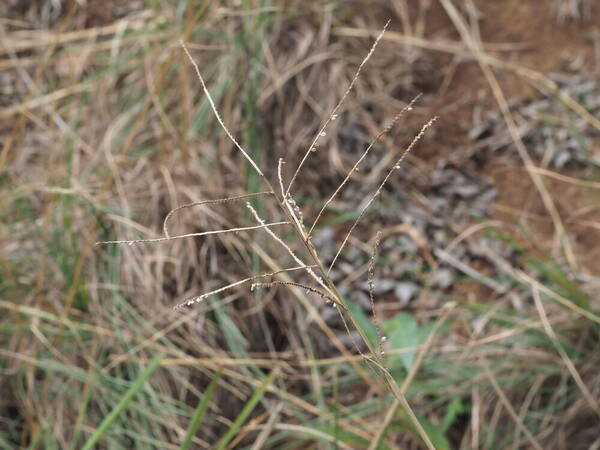
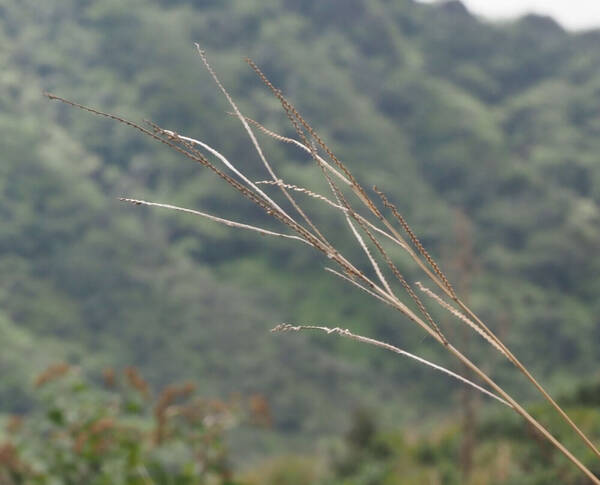
Plant
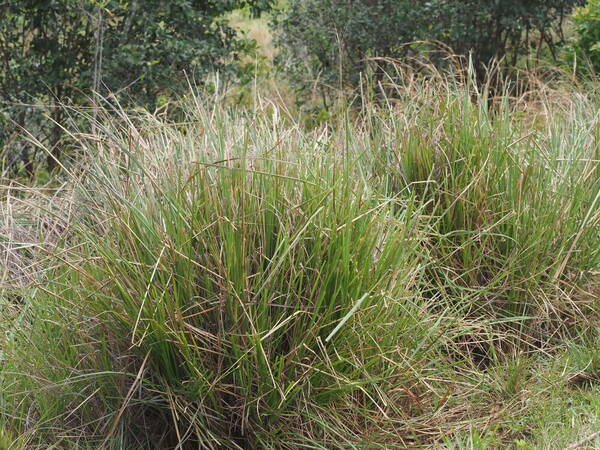

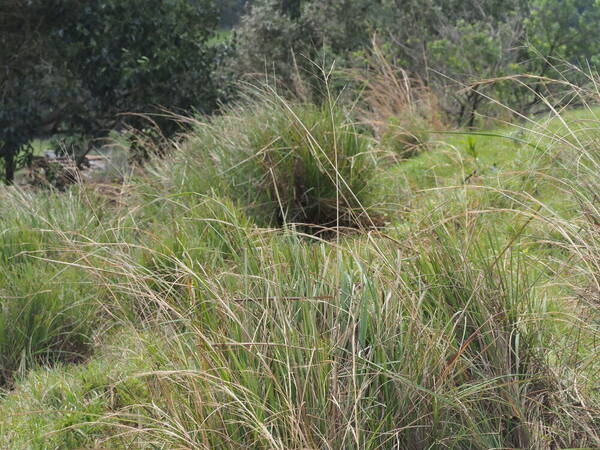
Spikelets
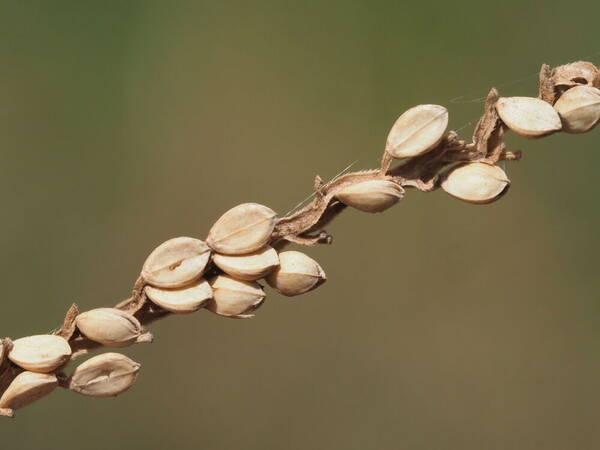

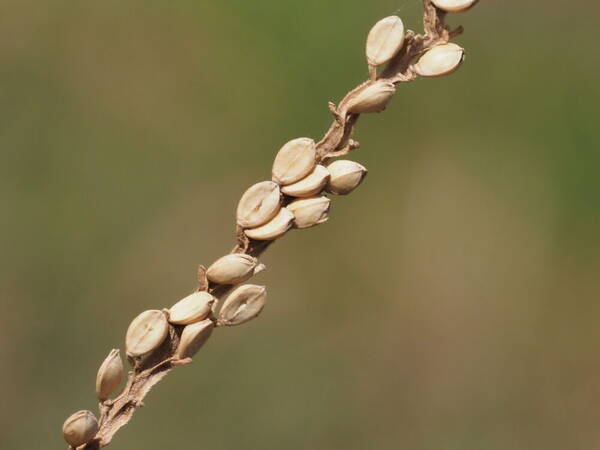
Landscape
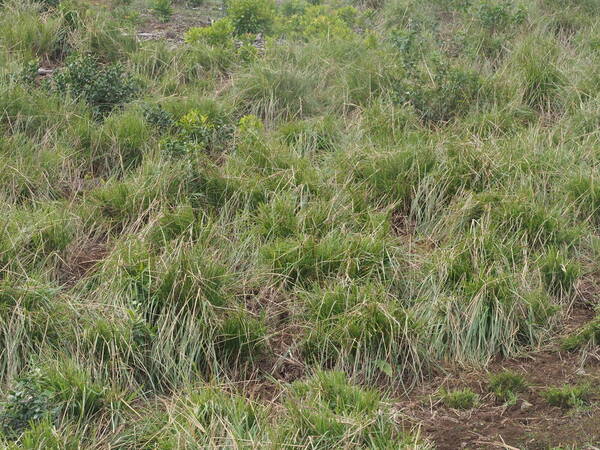
Description
Habit: Perennial; caespitose. Culms erect, or geniculately ascending; 75-150 cm long. Culm-nodes purple. Leaf-sheaths glabrous on surface; outer margin hairy. Ligule an eciliate membrane; 1.3-1.8 mm long; setose from base of abaxial surface. Leaf-blades 35-50 cm long; 5-7 mm wide. Leaf-blade surface scabrous; rough on both sides. Leaf-blade margins scabrous. Inflorescences: Inflorescence composed of racemes. Racemes 5-10; borne along a central axis; unilateral; 10-17 cm long. Central inflorescence axis 6-10 cm long. Rhachis 0.5 mm wide; scabrous on margins. Spikelet packing 2 -rowed. Spikelets in pairs. Fertile spikelets pedicelled. Pedicels 0.5-1.5 mm long; scabrous. Spikelets: Spikelets comprising 1 basal sterile florets; 1 fertile florets; without rhachilla extension. Spikelets obovate; dorsally compressed; plano-convex; 2.8-3.2 mm long; falling entire. Fertile Spikelets: Spikelets comprising 1 basal sterile florets; 1 fertile florets; without rhachilla extension. Spikelets obovate; dorsally compressed; plano-convex; 2.8-3.2 mm long; falling entire. Glumes: Glumes one to two the lower present in some spikelets; reaching apex of florets; thinner than fertile lemma. Lower glume ovate; 0-1.8 mm long; 0-0.5 length of spikelet. Upper glume ovate; 1 length of spikelet; membranous; without keels; 3 -veined. Upper glume apex acute. Florets: Basal sterile florets barren; without significant palea. Lemma of lower sterile floret elliptic; 1 length of spikelet; membranous; 3 -veined; obtuse. Fertile lemma obovate; 2.8-3.2 mm long; indurate; yellow; without keel. Lemma surface striate. Lemma margins involute. Lemma apex acute. Palea involute; indurate. Flowers: Anthers 3. Fruits: Caryopsis with adherent pericarp. Distribution: North America: Mexico. South America: Mesoamericana, Caribbean, northern South America, Brazil, and southern South America.
(Description source: Clayton, W.D., Vorontsova, M.S., Harman, K.T. and Williamson, H. (2006 onwards). GrassBase - The Online World Grass Flora. Available at https://powo.science.kew.org )